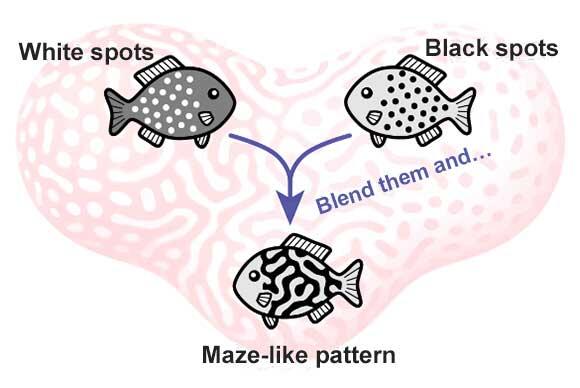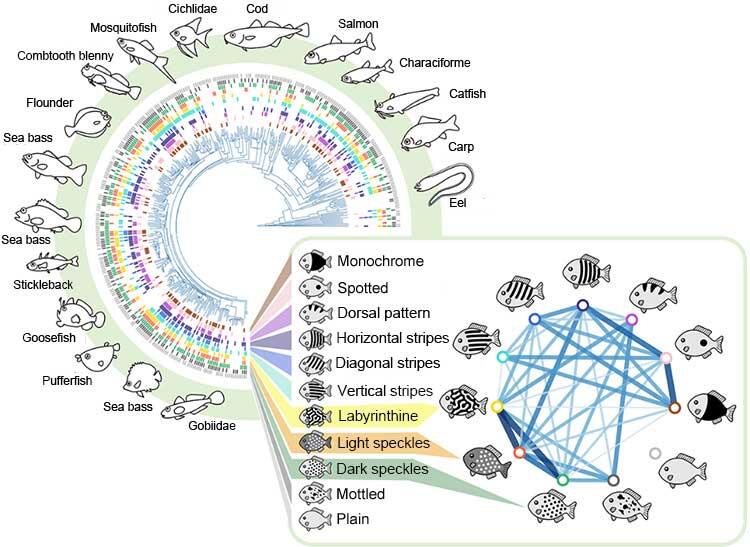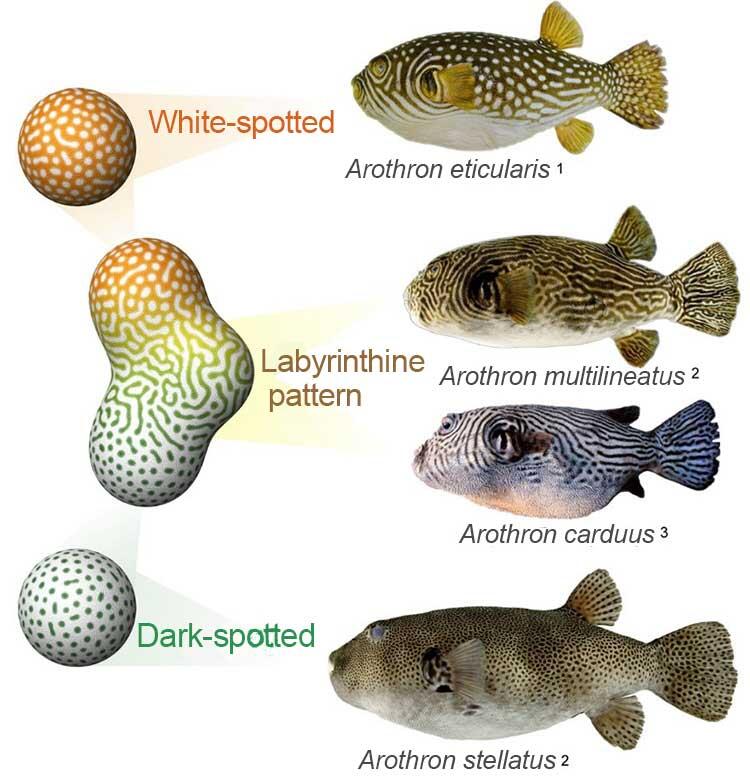Research by Osaka University based on visual comparison of fish detail, simulations and DNA has revealed that the complicated patterns of animal skin are the result of blending of very different simple patterns. These findings do not simply concern patterns, they may also help us to understand mechanisms of evolution such as species differentiation.

Animals like zebras, leopards and giraffes have unique patterns on their hides or skin. Theories about the function of their patterns, be it to escape from predators,to regulate body temperature or to repel insects, for example, are now being tested. So, how did these patterns first come about? According to recent research, it is likely that some of the simple patterns found on insect wings emerged in the coloration of body parts with particular structures, like a painting. Meanwhile, the mechanism for maze-like complex patterns found in areas without special structures has remained shrouded in mystery.
Seita Miyazawa (evolutionary biology) at Osaka University looked at patterns on fish in a database of photographs of 18,114 species to determine if there was any correlation between various patterns such as spots, stripes and labyrinths. He found a surprising tendency for those species with labyrinthine patterns to be closely related to those species with absolutely different spotted patterns.

Further, crossing two imaginary species in a computer simulation, one with white spots and the other with black spots, the resulting hybrid always turned out to have a labyrinthine pattern.
This suggested that animals of labyrinthine pattern could have arisen from the hybridization of white-spotted and black-spotted species, and he sought to prove it by matching the Arothron stellatus pufferfish pattern with the entire genome. Pufferfish are easier to research because of their limited genome size.
Pufferfish species like Arothron multilineatus and Arothron carduus, which have a maze-like pattern, actually emerged from breeding between white-spotted and black-spotted pufferfish, thereby they turned out not to be separate species. Further analysis revealed that this kind of pattern blending happens in other important fish species, which may be what creates such a diversity of patterns. However, not all labyrinthine patterning can be put down to this kind of blending.

Typically, the more closely related an animal species, the more similar they are in body form, size and other characteristics. Yet according to Miyazawa, in many cases adjacent species have completely different patterns. It is also not uncommon to find species that are completely foreign to each other to have very similar patterns.
"It was long thought that the chances of a new species arising from cross-breeding were extremely low. However, it may be that a new species could come about due to pattern blending," posits Miyazawa. "The mechanism revealed here could be a clue to the mystery of the diversity of life." His findings were published in US scientific journal Science Advances on December 3.
Original article was provided by the Science Portal and has been translated by Science Japan.




